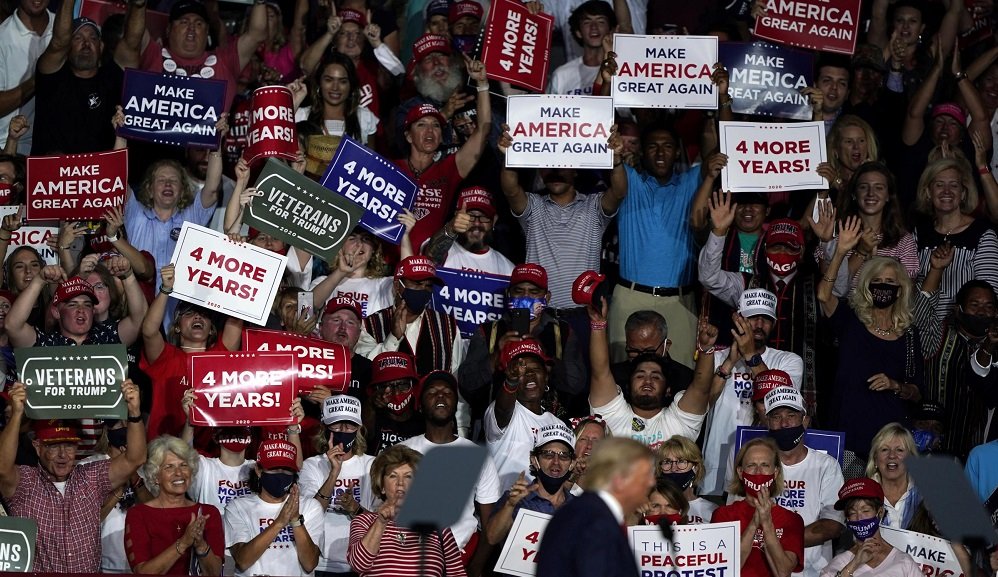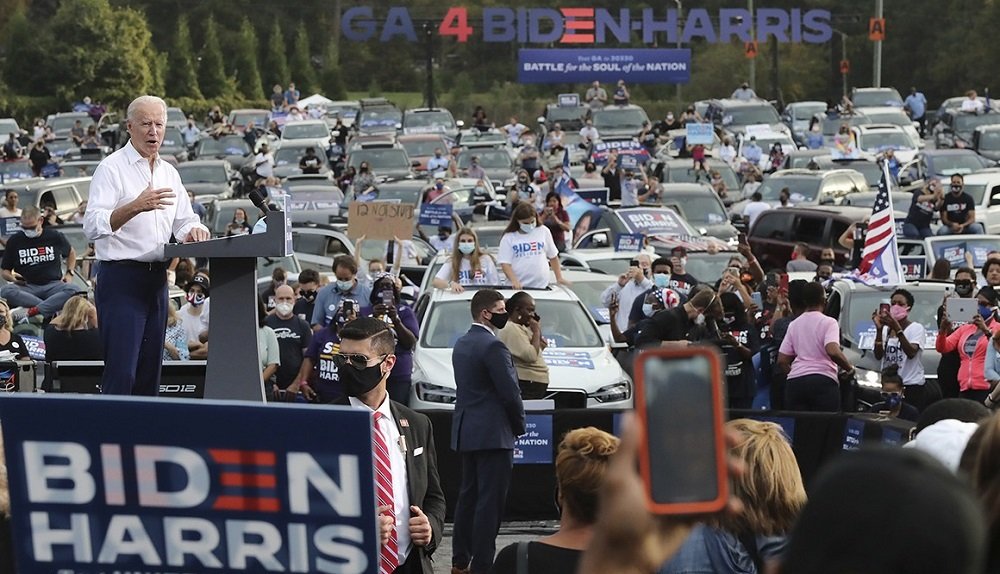Of critical importance to many and of soap opera-esque interest to more, the United States will vote in its 59th quadrennial presidential election tomorrow, 3 November 2020.
While Covid-19 has certainly changed the campaign trail for both President Donald Trump and Joe Biden, it hasn’t changed the nature of how you win elections: effective communications.
A candidate’s message, tone, and consistency create connection or disconnection with the electorate. While there is no magic formula for success, simplicity, focus, and an ability to read the public mood—to resonate—are nearly always well rewarded.
This insight propelled Sinn Féin and its message of “change” to an unprecedented result in this country in February. Last December it gave the UK Conservatives their biggest parliamentary majority since Margaret Thatcher in 1987.
With less than 24 hours to go before in-person voting begins in the US, the question for Trump and Biden now is whether either of them has studied the electorate and communicated well enough to confidently attain victory.
Four more years
Four years ago, Trump shook up the election game by focusing primarily on his opponent’s message and character, not his own.
Trump’s attack campaign on his 2016 Democratic rival, the seasoned politician Hillary Clinton, arguably won him the Oval Office. He coined “crooked Hillary” and probably spoke more about her than he did himself. The American public lapped it up, questioned Clinton’s trustworthiness, and Trump as the apparent outsider strode to victory.
This time around, things are different. For a start, having had four years as top dog in the White House, Trump’s claim that he’s not part of the Washington “swamp” is propped up more than stands up unaided; he is the establishment now. Whereas Clinton could not point to any of Trump’s political errors, Biden has had plenty to choose from.
This was clear in the first televised head-to-head debate. With a record to defend and plans to communicate, Trump’s 2016 strategy of attacking and shouting over his opponent simply did not work. Biden was free to pick at him. The result was a confusing and frustrating spectacle.

“Bullish”, “loud”, and “irregular” are not words a communications professional would typically include as part of a social media strategy, but it’s fair to say that in 2016 Trump’s Twitter revolutionised political communications.
By making it normal to issue an official, reportable statement on social media, the President moved the news agenda away from the structured routine of the newspaper editorial desks to his own smartphone.
However, during the most recent and thus hugely important stages of his re-election campaign, Trump, possibly rattled by shaky polls, has moved off course and released a number of blockbuster-style videos. Dissimilar to his usual form, the videos show him as the defiant (and highly unrelatable) action man who survived Covid-19 and proved the scientists wrong.
Here, he has moved into the world of his Democratic opponents, with polished content, flashy shots, beaming waves, and dramatic walking, none of which he has or will ever be able to pull off.
Through factors of mostly his own making, Trump has been consistently on the back foot in the build up to tomorrow’s vote. Covid-19 has caused a shift in focus away from a previously booming economy, and it is his muddled response and tone on this issue where he has lost most ground.
Who is Joe Biden and why don’t we know?
Joe Biden is everything Donald Trump is not. In the current election climate, that is not necessarily a good thing. Yes, he’s “presidential”, respectful, and has a political track record, but his campaign and communications strategy lack vigour and “excitement”.
At 360, we work with clients to create the narrative, not get absorbed by someone else’s. In a line, that is essentially where Biden, the seasoned communicator and career politician, has allowed himself to be placed. He is stuck in a world of tit-for-tat with Trump.
With the fear that in every piece of communication he is exposing himself to a Clinton-esque Trump takedown, Biden has been meek, uneventful, and plain in dotting all the “i”s and crossing all the “t”s.
Sure, his speeches are consistent; they put forward workable solutions to America’s economic and societal challenges. However, you would be forgiven for not remembering them.
Biden has failed to create his own narrative, and in doing so, he has repeatedly missed opportunities to really connect with the American people. Even the addition of running mate Kamala Harris in August nearly overshadowed his own presence on the ticket.
Biden accepted and led with the tag of “frontrunner” in the early days of his election campaign, a label that Trump has been both comfortable and successful going without. Everyday Americans, a cohort we see quite seldom in mainstream media, are not as clearly for or against Trump as we have been led to believe. Many remain undecided.
Voters can be irked by an overly confident candidate, especially one who has retained a comfortable lead for such a long time. Biden may have fallen into that trap. Trump, however, has built momentum to peak at the right time, polling day, thereby positioning himself to collect those last-minute deciders.

The rift
Trump and Biden’s different communications approaches both leave a lot to be desired. Not all politicians can be Nelson Mandela-type peace makers, but a basic requirement of any leader should be to bring those they lead closer together. It’s possible that all either candidate has really achieved is a deepening of America’s political polarisation.
Biden has made attempts at national unity, but by being for everyone and everything, he may have failed to connect with anyone. Trump, despite trying to carve out a position as the everyman, has only stoked the flames of those for and against everyone and everything. This, however, has always been and may be again, his greatest strength—the ability to enrage and inspire millions of Americans into voting his way.
National polls indicate that Trump is once again the underdog. He will play his “outsider” card to the bitter end, even if he has been President for four years. Biden has been too comfortable in the “winner’s seat” for too long and is starting to lose momentum. While the polls are still in his favour, they are tightening.
Whatever happens tomorrow, it’s clear that by controlling the narrative, Trump has made this election a referendum on his suitability to lead the United States for a second term. This, coupled with a win by an underwhelming Biden, may make a Trump loss all the more painful for the current administration and its supporters.

About the author
Barry supports 360’s portfolio of public affairs and corporate clients. With a background in farming, he has a particular interest in the agrifood sector and environmental policy. Before joining 360, Barry was Campaigns & Communications Officer and later President of UCD Students’ Union. He is also an alum of the Washington Ireland Program, interning with the New York State Comptroller during his time in the US.
